The Players
|
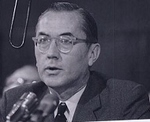 William Colby: Director of Southeast Asia Affairs for the CIA during the 1960s. In his book, he stated there are many versions and accounts about Major Sy Dang's handling of the event at the radio station. Though he doubted the Buddhist persecution by the First Republic and Major Dang's allegations, he indicated the CIA office in Saigon was informed by Buddhist demonstrators that the South Vietnam Army opened fire on them during the demonstration at the radio station [Prados, 2004], which led to the infamous May 1963 telegram from the U.S. Consulate at Hue to U.S. Department of State [U.S. State Department, 1964]. William Colby: Director of Southeast Asia Affairs for the CIA during the 1960s. In his book, he stated there are many versions and accounts about Major Sy Dang's handling of the event at the radio station. Though he doubted the Buddhist persecution by the First Republic and Major Dang's allegations, he indicated the CIA office in Saigon was informed by Buddhist demonstrators that the South Vietnam Army opened fire on them during the demonstration at the radio station [Prados, 2004], which led to the infamous May 1963 telegram from the U.S. Consulate at Hue to U.S. Department of State [U.S. State Department, 1964].
|
|
Phong Dang (Vietnamese: Đặng Phong): Chief of Police for Hue city. He testified the disorder and violence that escalated. At times, Mr. Dang demanded the court to detonate a concussion grenade used at the scene in front of him, to prove the non-lethal affects to unarmed civililan.
|
|
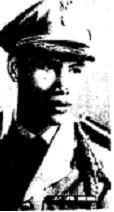 Major Sy Dang (Vietnamese: Đặng Sỹ): head of Security for Hue city and Thua Thien province. He was implicated in the deaths of people during a confrontation between government forces and the Buddhists at a state run radio station [U.S. State Department, 1964]. While the media reported his alleged crimes against the Buddhists, they glossed over the fact that two of the victims
were Catholics and Major Dang's in-laws were Buddhists [Dommen, 2001].
He was exonerated by the First Republic, imprisoned by the Military Junta, indicted by the Revolutionary Council and ultimately freed by the Second Republic. Major Sy Dang (Vietnamese: Đặng Sỹ): head of Security for Hue city and Thua Thien province. He was implicated in the deaths of people during a confrontation between government forces and the Buddhists at a state run radio station [U.S. State Department, 1964]. While the media reported his alleged crimes against the Buddhists, they glossed over the fact that two of the victims
were Catholics and Major Dang's in-laws were Buddhists [Dommen, 2001].
He was exonerated by the First Republic, imprisoned by the Military Junta, indicted by the Revolutionary Council and ultimately freed by the Second Republic.
|
|
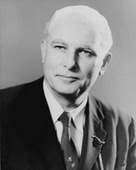 Senator Thomas J. Dodd: He testified in U.S. Congress that radical news reporting had created a biased view of the First Republic which ultimately caused it to lose support from the United States.
He introduced the United Nations Investigative Mission findings to the Senator James Oliver Eastland (D-MS), Chairman of Subcommittee on Internal Security, a U.S. Congress arm responsible for disclosing information to the American public on matters that foreign to them, yet affected their lives. Senator Thomas J. Dodd: He testified in U.S. Congress that radical news reporting had created a biased view of the First Republic which ultimately caused it to lose support from the United States.
He introduced the United Nations Investigative Mission findings to the Senator James Oliver Eastland (D-MS), Chairman of Subcommittee on Internal Security, a U.S. Congress arm responsible for disclosing information to the American public on matters that foreign to them, yet affected their lives.
|
|
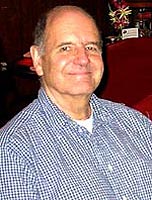 Arthur Dommen: An American author who wrote three books on Southeast Asia. He was the bureau chief for United Press International in Saigon and Los Angeles Times. His last book, The Indochinese experience of the French and the Americans: Nationalism and Communism in Cambodia, Laos and Vietnam indicated a third party, CIA operatives, involved in the events that led to the Trial of Dang Sy [Dommen, 2001]. Arthur Dommen: An American author who wrote three books on Southeast Asia. He was the bureau chief for United Press International in Saigon and Los Angeles Times. His last book, The Indochinese experience of the French and the Americans: Nationalism and Communism in Cambodia, Laos and Vietnam indicated a third party, CIA operatives, involved in the events that led to the Trial of Dang Sy [Dommen, 2001].
|
|
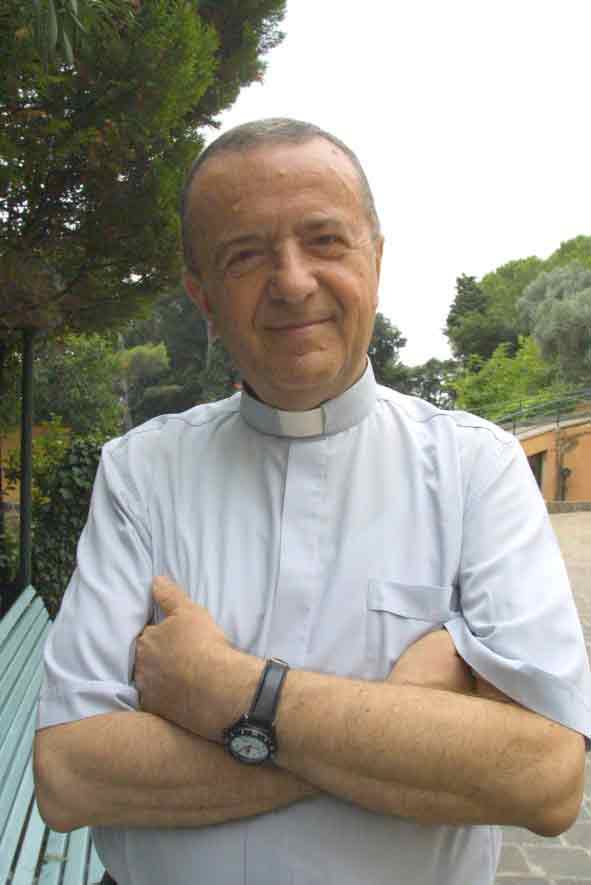 Father Piero Gheddo: An Italian missionary priest of Pontifical Institute for Foreign Missions and founder of the missionary news agency AsiaNews, who was in South Vietnam during the 1960s. An advocate for the unjusts, Fr. Gheddo indicated that the international media unfairly leveled negativity against the Catholic Church and Major Dang Sy while ignoring certain facts that would help to exonerate Major Dang Sy [Gheddo, 1970]. Father Piero Gheddo: An Italian missionary priest of Pontifical Institute for Foreign Missions and founder of the missionary news agency AsiaNews, who was in South Vietnam during the 1960s. An advocate for the unjusts, Fr. Gheddo indicated that the international media unfairly leveled negativity against the Catholic Church and Major Dang Sy while ignoring certain facts that would help to exonerate Major Dang Sy [Gheddo, 1970].
|
|
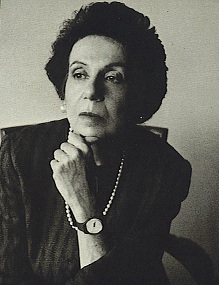 Ellen Hammer: An American author who wrote several books covering Vietnam during the turbulent 1960s. She wrote A Death In November which covered the Trial of Dang Sy in length. She reconstructed the events that took place at the radio station in Hue. She earned a BA, BS and PhD from University of Columbia [Hammer, 1987]. Ellen Hammer: An American author who wrote several books covering Vietnam during the turbulent 1960s. She wrote A Death In November which covered the Trial of Dang Sy in length. She reconstructed the events that took place at the radio station in Hue. She earned a BA, BS and PhD from University of Columbia [Hammer, 1987].
|
|
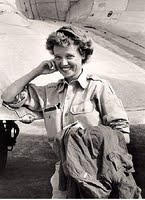 Marguerite Higgins: An American correspondence reporter who covered Korea and Vietnam in the 1950s and 1960s, which includes the Hue Crisis as well as the downfall of the First Republic. She received a Pulitzer prize for her one of her books. She was in a joint effort with the United Nation fact finding mission. She fervently believed in the injustice at the trial of Dang Sy and the demoralizing, spiraling effects afterward. Our Vietnam Nightmare was published posthumously in honor of her dedication to the foreign service. Marguerite Higgins: An American correspondence reporter who covered Korea and Vietnam in the 1950s and 1960s, which includes the Hue Crisis as well as the downfall of the First Republic. She received a Pulitzer prize for her one of her books. She was in a joint effort with the United Nation fact finding mission. She fervently believed in the injustice at the trial of Dang Sy and the demoralizing, spiraling effects afterward. Our Vietnam Nightmare was published posthumously in honor of her dedication to the foreign service.
|
|
 Henry Cabot Lodge: The U.S. Ambassador to South Vietnam during the turbulent 1960s. He was the replacement for Ambassador Frederick Nolting. A firm believer in the injustice of the Trial of Dang Sy and further turmoil that followed, Ambassador Lodge irked General Khanh when he warned the general that further antagonizing the Catholics with false accusations and exaggerations would not bode well for the fledging Revolutionary Council that replaced the Military Junta. [Blair, 1995] Henry Cabot Lodge: The U.S. Ambassador to South Vietnam during the turbulent 1960s. He was the replacement for Ambassador Frederick Nolting. A firm believer in the injustice of the Trial of Dang Sy and further turmoil that followed, Ambassador Lodge irked General Khanh when he warned the general that further antagonizing the Catholics with false accusations and exaggerations would not bode well for the fledging Revolutionary Council that replaced the Military Junta. [Blair, 1995]
|
|
Major Duc van Nguyen (Vietnamese: Nguyễn văn Đức): the prosecutor in the Trial of Dang Sy. He was the prosecutor in cases that resulted in the executions of Ngo Dinh Can and Phan Quang Dong. He pressed for the death penalty if Major Dang was found guilty by the Tribunal [Associated Press, 1964]. Even he did not succeed, he explained to Major Dang that he was only doing his job.
|
|
 General Khanh Nguyen (Vietnamese: Nguyễn Khánh): the head of Military Junta which replaced the First Republic headed by President Diem. He was a controversial figure who, at times, played both sides for appeasing the Buddhist movement as well as protecting the Republic government. He was alleged for rigging the Trial of Dang Sy with false accusations as well as offering Thich Tri Quang a position in the government. He later withdrew the offer, prompting a fear of the return of Diem followers [U.S. State Department, 1964], [Hammer, 1987].
In 1965, he resigned as Head of State and went on a self-imposed exile, never to return [Hammer, 1987]. General Khanh Nguyen (Vietnamese: Nguyễn Khánh): the head of Military Junta which replaced the First Republic headed by President Diem. He was a controversial figure who, at times, played both sides for appeasing the Buddhist movement as well as protecting the Republic government. He was alleged for rigging the Trial of Dang Sy with false accusations as well as offering Thich Tri Quang a position in the government. He later withdrew the offer, prompting a fear of the return of Diem followers [U.S. State Department, 1964], [Hammer, 1987].
In 1965, he resigned as Head of State and went on a self-imposed exile, never to return [Hammer, 1987].
|
|
 Frederick E. Nolting: U.S. Ambassador to South Vietnam, preceding Henry Cabot Lodge. A believer in the non-involvement of South Vietnamese army in the civilian deaths at the Hue radio station; he ultimately resigned from the Foreign Services over the fall of the First Republic. [Hammer, 1987]. Frederick E. Nolting: U.S. Ambassador to South Vietnam, preceding Henry Cabot Lodge. A believer in the non-involvement of South Vietnamese army in the civilian deaths at the Hue radio station; he ultimately resigned from the Foreign Services over the fall of the First Republic. [Hammer, 1987].
|
|
Father Patrick O'Connor: An Irish American Jesuit who championed the plight of Major Dang Sy. A close friend of U.S. Ambassador Frederick Nolting and a sore thumb for Dr. Wulff, they often traded comments on the New York Times. He was instrumental in the release of American missionaries in Korea during the 1950s. He was unable to help the trial of Ngo Dinh Can and Phan Quang Dong [American Catholic Historical Society, 2004].
|
|
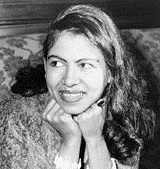 Philippa Schuyler: An American correspondent writer and musician who travelled to South Vietnam during the 1960s to entertain U.S. troops. She also used these times helping many children orphaned by violence. She believed that Major Dang and his troops were attacked by a mob who later reversed their position to claim they were attacked [U.S. State Department, 1964]. These falsehoods were initially supported by U.S. Ambassador Lodge, when both Thich Tri Quang and Ngo Dinh Can sought U.S. Embassy protection during the chaotic aftermath of the coup that killed President Diem [Schuyler, 1969]. Her book was posthumously published in honor of her dedication to help South Vietnamese orphans. Philippa Schuyler: An American correspondent writer and musician who travelled to South Vietnam during the 1960s to entertain U.S. troops. She also used these times helping many children orphaned by violence. She believed that Major Dang and his troops were attacked by a mob who later reversed their position to claim they were attacked [U.S. State Department, 1964]. These falsehoods were initially supported by U.S. Ambassador Lodge, when both Thich Tri Quang and Ngo Dinh Can sought U.S. Embassy protection during the chaotic aftermath of the coup that killed President Diem [Schuyler, 1969]. Her book was posthumously published in honor of her dedication to help South Vietnamese orphans.
|
|
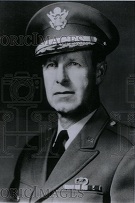 General Charles E. Timmes: Head of Vietnam Advisory Group in United States Military Assistance and Advisory. In his deposition for the Trial of Dang Sy, he believed Major Dang was absolutely innocent and his methods in dealing with riots were humane and in accordance with his training in the United States, as a South Vietnamese captain and major. General Timmes also motioned two American military experts to testify the effectiveness of the concussion grenades deployed. This motion was denied by the court [Higgins, 1965]. General Charles E. Timmes: Head of Vietnam Advisory Group in United States Military Assistance and Advisory. In his deposition for the Trial of Dang Sy, he believed Major Dang was absolutely innocent and his methods in dealing with riots were humane and in accordance with his training in the United States, as a South Vietnamese captain and major. General Timmes also motioned two American military experts to testify the effectiveness of the concussion grenades deployed. This motion was denied by the court [Higgins, 1965].
|
|
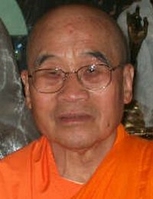 Venerable Thich Tam Chau (Vietnamese: Thích Tâm Châu): The sole voice from the Buddhist hierarchy who defended Major Dang and his troops. He stated while the deaths were clearly from large, lethal explosion; pinning the blame on Major Dang was irresponsible and not the way of Buddha. [Nguyên, 2006] Venerable Thich Tam Chau (Vietnamese: Thích Tâm Châu): The sole voice from the Buddhist hierarchy who defended Major Dang and his troops. He stated while the deaths were clearly from large, lethal explosion; pinning the blame on Major Dang was irresponsible and not the way of Buddha. [Nguyên, 2006]
|
|
 Venerable Thich Tri Quang (Vietnamese: Thích Trí Quang): Sur name, Phạm Văn Bông, was a young monk who led the Buddhist movement that culmulate to the downfall of the First Republic and Military Junta. While many claimed that he was communist [Dommen, 2001], few sources said he was anti-communist and only interested in the welfare of Buddhism in Vietnam [Prados, 2004]. Marguerite Higgins quoted his conversation with Ambassador Lodge that Diem must be removed in order to talk with the North [Higgins, 1965]. Venerable Thich Tri Quang (Vietnamese: Thích Trí Quang): Sur name, Phạm Văn Bông, was a young monk who led the Buddhist movement that culmulate to the downfall of the First Republic and Military Junta. While many claimed that he was communist [Dommen, 2001], few sources said he was anti-communist and only interested in the welfare of Buddhism in Vietnam [Prados, 2004]. Marguerite Higgins quoted his conversation with Ambassador Lodge that Diem must be removed in order to talk with the North [Higgins, 1965].
|
|
 General Ton That Dinh (Vietnamese: Tôn Thất Đính): A Buddhist general who was imprisoned by the Military Junta. He was released afterward, with full rank. He stated that Major Dang's security entourage entered the radio station in armored vehicle, equiped with tires, which contradicted accusations that Major Dang trampled the fleeing demonstrators with tanks, leaving tracks on the tattered bodies. These vehicles elastic tires were designed to climb the stairs leading to the radio station's entrance. [Nguyên, 2006] General Ton That Dinh (Vietnamese: Tôn Thất Đính): A Buddhist general who was imprisoned by the Military Junta. He was released afterward, with full rank. He stated that Major Dang's security entourage entered the radio station in armored vehicle, equiped with tires, which contradicted accusations that Major Dang trampled the fleeing demonstrators with tanks, leaving tracks on the tattered bodies. These vehicles elastic tires were designed to climb the stairs leading to the radio station's entrance. [Nguyên, 2006]
|
|
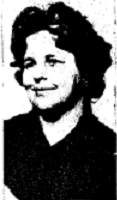 Ann Westrick: An American who contacted Major Dang Sy during his time in prison through Catholic Relief Service. She felt that Major Dang Sy sufferred illegal arrest, court frameup and unjust sentence. She petitioned to the U.S. Congress, Department of State and Department of Defense, United Nations, South Vietnam, as well as other U.S. allies in Southeast Asia for Major Dang's freedom. It was at her insistence that Major Dang must be allowed to testify and should bear no political pressure for his testimony. [Owosso Argus-Press, 1966] Ann Westrick: An American who contacted Major Dang Sy during his time in prison through Catholic Relief Service. She felt that Major Dang Sy sufferred illegal arrest, court frameup and unjust sentence. She petitioned to the U.S. Congress, Department of State and Department of Defense, United Nations, South Vietnam, as well as other U.S. allies in Southeast Asia for Major Dang's freedom. It was at her insistence that Major Dang must be allowed to testify and should bear no political pressure for his testimony. [Owosso Argus-Press, 1966]
|
|
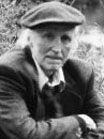 Dr. Errich Wulff: At times, known as Georg W. Alsheimer, a German psychiatrist who was a professor of social psychiatry at the Medical University of Hanover. He was the medical doctor who worked in South Vietnam during the 1960s. His claims to be at the scene where several people were killed during a confrontation between the Buddhists and government forces propelled him into the media stratosphere as the friend of Vietnam Buddhism. He wrote Vietnam Apprenticeship, which outlined his journey from a Christian to Socialist and his anti-war, anti-American efforts [Soelle, 1999]. After his testimony at the Trial of Dang Sy, he received a hero's welcome from the Buddhist hierarchy in central Vietnam [Nguyên, 2006]. Dr. Errich Wulff: At times, known as Georg W. Alsheimer, a German psychiatrist who was a professor of social psychiatry at the Medical University of Hanover. He was the medical doctor who worked in South Vietnam during the 1960s. His claims to be at the scene where several people were killed during a confrontation between the Buddhists and government forces propelled him into the media stratosphere as the friend of Vietnam Buddhism. He wrote Vietnam Apprenticeship, which outlined his journey from a Christian to Socialist and his anti-war, anti-American efforts [Soelle, 1999]. After his testimony at the Trial of Dang Sy, he received a hero's welcome from the Buddhist hierarchy in central Vietnam [Nguyên, 2006].
|
References:
1. Prados, John. Lost Crusader: the Secret Wars of CIA director William Colby. Oxford University Press, 2004.
2. The Situation in Vietnam - CIA Weekly Report, U.S. State Department, June 1964.
3. Dommen, Arthur J. The Indochinese experience of the French and the Americans: Nationalism and Communism in Cambodia, Laos and Vietnam . Indiana University Press, 2001.
4. Higgins, Marguerite. Our Vietnam nightmare. Harper Row Publishing, 1965.
5. Hammer, Ellen J. A Death in November. Penguin Publishing Group, 1987.
6. Soelle, Dorothee. Against the wind: memoir of a radical Christian. Fortress Press, 1999.
7. Death Sentence Asked for Vietnamese Major. Associated Press, 1964.
8. Nguyên, Lữ. Lịch Sử Vẩn Còn Đây. VietCatholic.org, 2006.
9. American Catholic studies, Volume 115, Issues 1-4. American Catholic Historical Society of Philadelphia, 2004.
10. Blair, Anne E. Lodge in Vietnam: A Patriot Abroad. Yale University Press, 1995.
11. State Woman Fights for Major's Freedom. Owosso Argus-Press, March 1966.
12. Gheddo, Piero. The Cross and the Bo De-tree: Catholics and Buddhists in Vietnam. Sheed and Ward Publishing, 1970.
13. Schuyler, Philippa Duke. Good men die? Twin Circle Publishing Company, 1969.
|